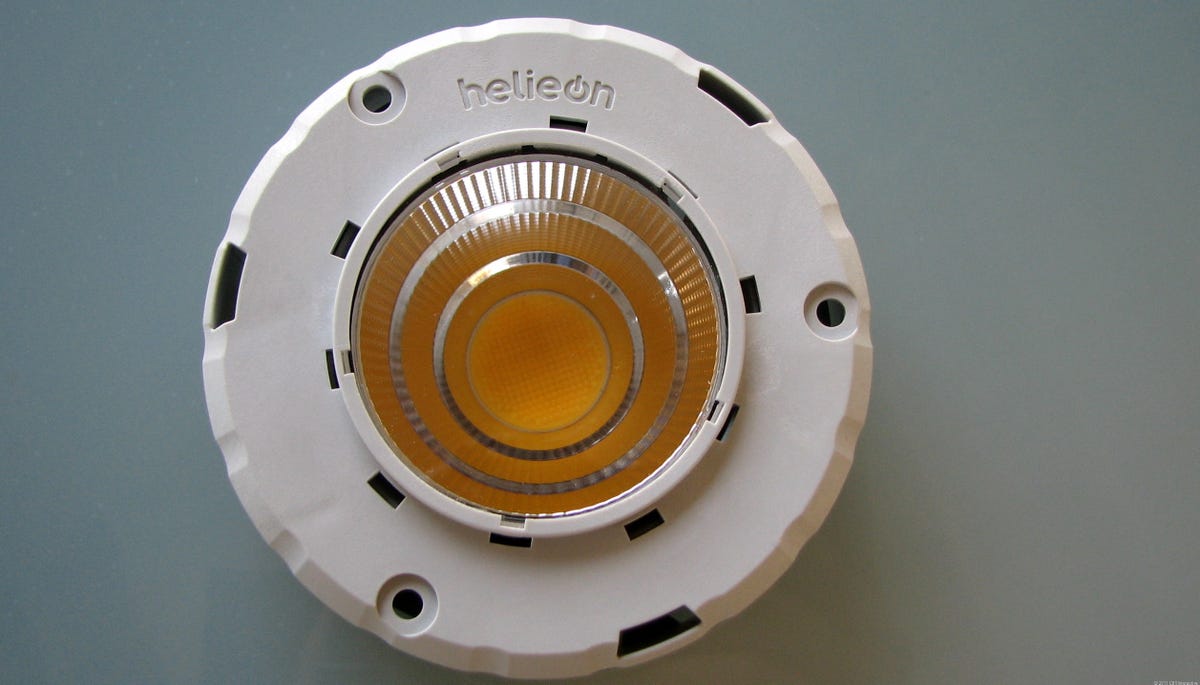A snap-in LED light (photos)
LED light source maker Bridgelux has designed a lighting module that includes the light engine and the driver electronics showing how LED lighting opens up new design possibilities.

A new light "bulb?"
Is something like this the successor to the Edison screw-in light bulb base? It's the Helion LED lighting module from Bridgelux and partner Molex, a product the company plans to start producing early next year aimed primarily at commercial customers. The module includes the electronics called a driver needed for power conversion within the device, rather than as a separate "brick." That means the modules can be fitted into light fixtures and then upgraded by replacing the module without having to update the driver.
See related story, Inventing a new light socket for LED lighting.
LED
A closer look inside the lighting component. The coin-size yellow disk is the LED light "engine," a semiconductor which produces light. LEDs produce blue light so there is a yellow phosphor which covers it to produce a white light. The color of LED lights can be adjusted depending on what sort of phosphor is used.
Snap in
A look at how the LED module snaps into a demonstration fixture which Bridgelux and Molex designed. It's a track lighting product. The companies' prospective customers are light fixture makers who will incorporate the module into their products.
Heat sink
This demonstration light, which is made out of metal, includes a large heat sink, the left-hand side of this light. Heat sinks are needed to dissipate heat created by LED light sources, which helps ensure a longer life.

